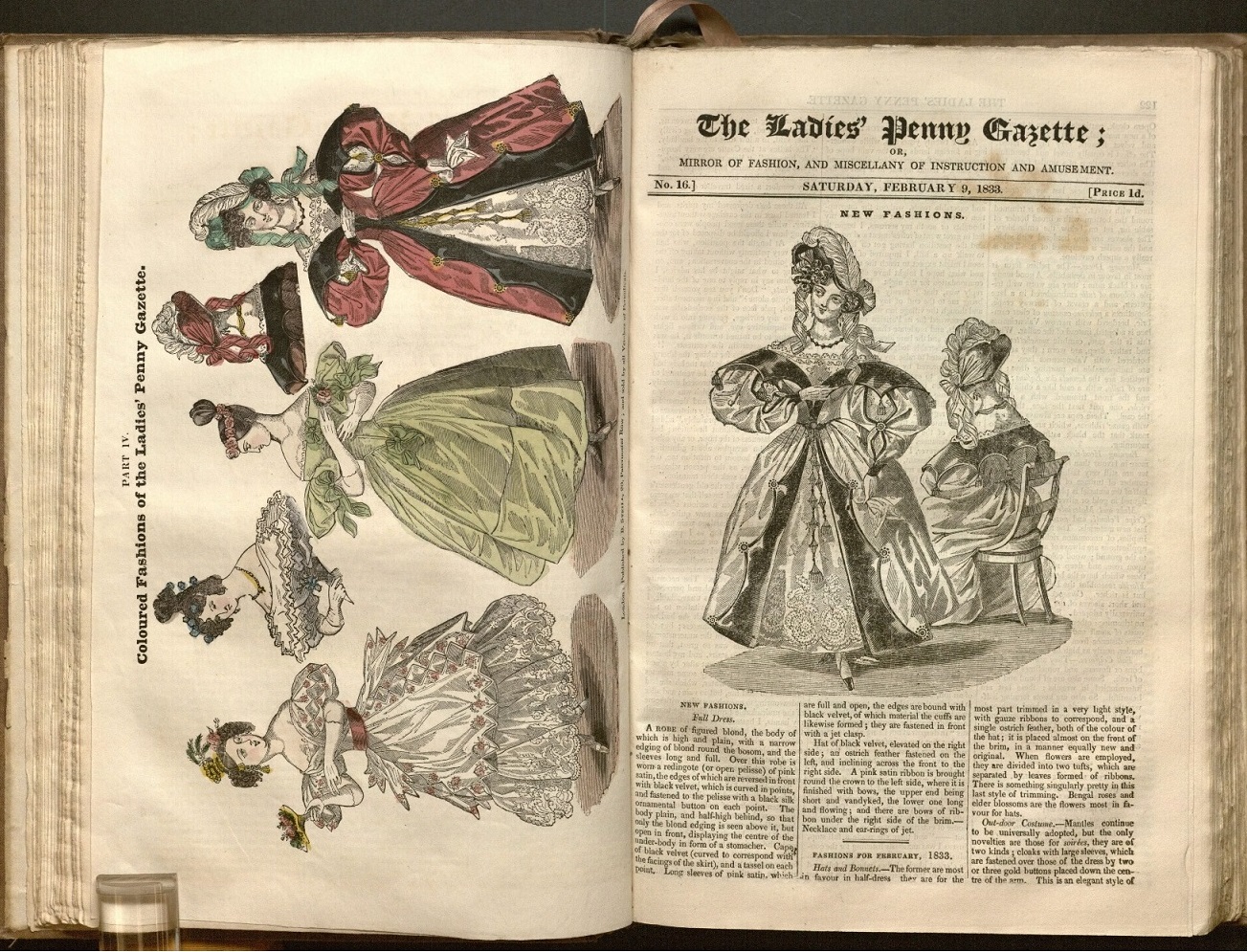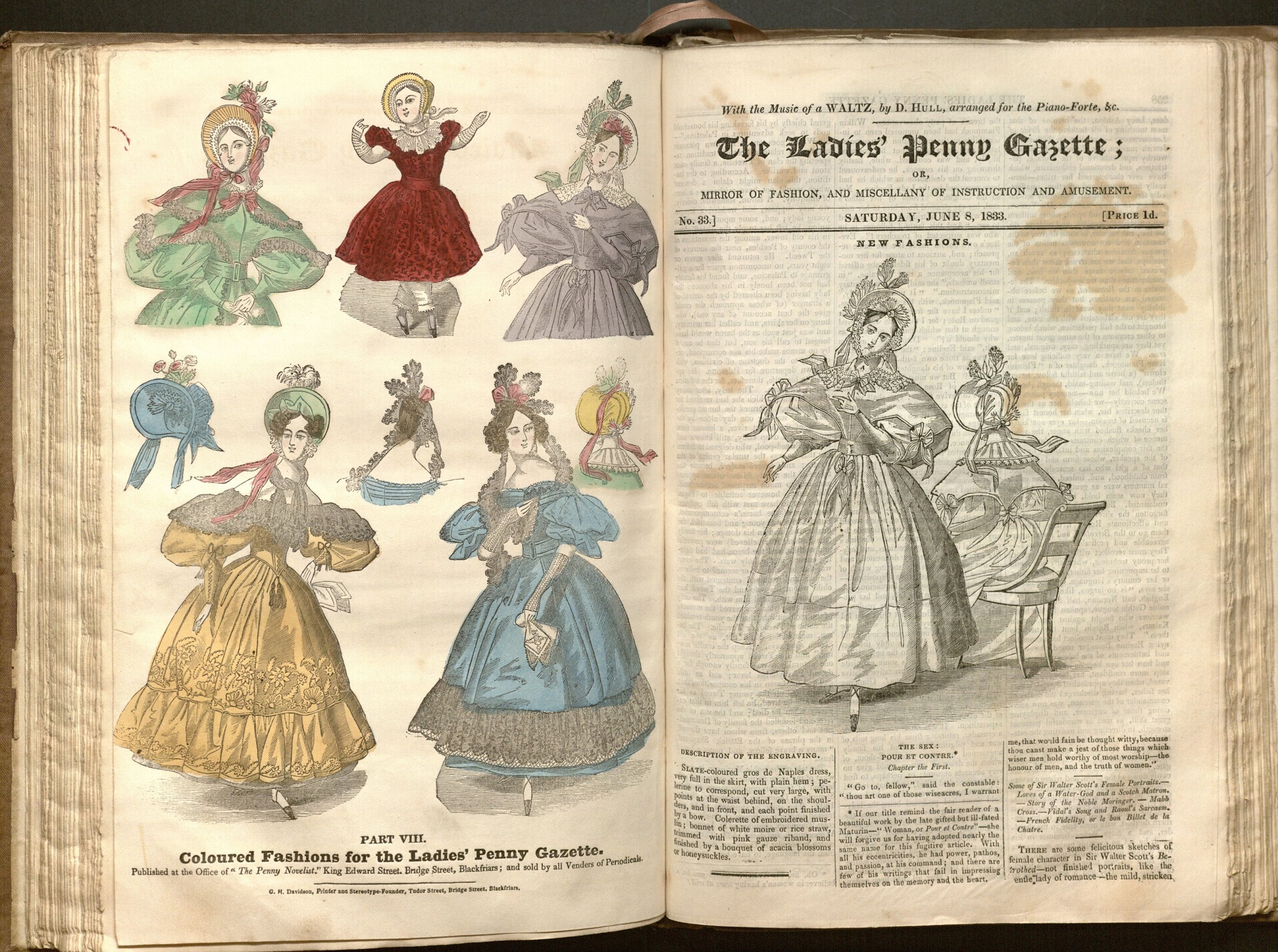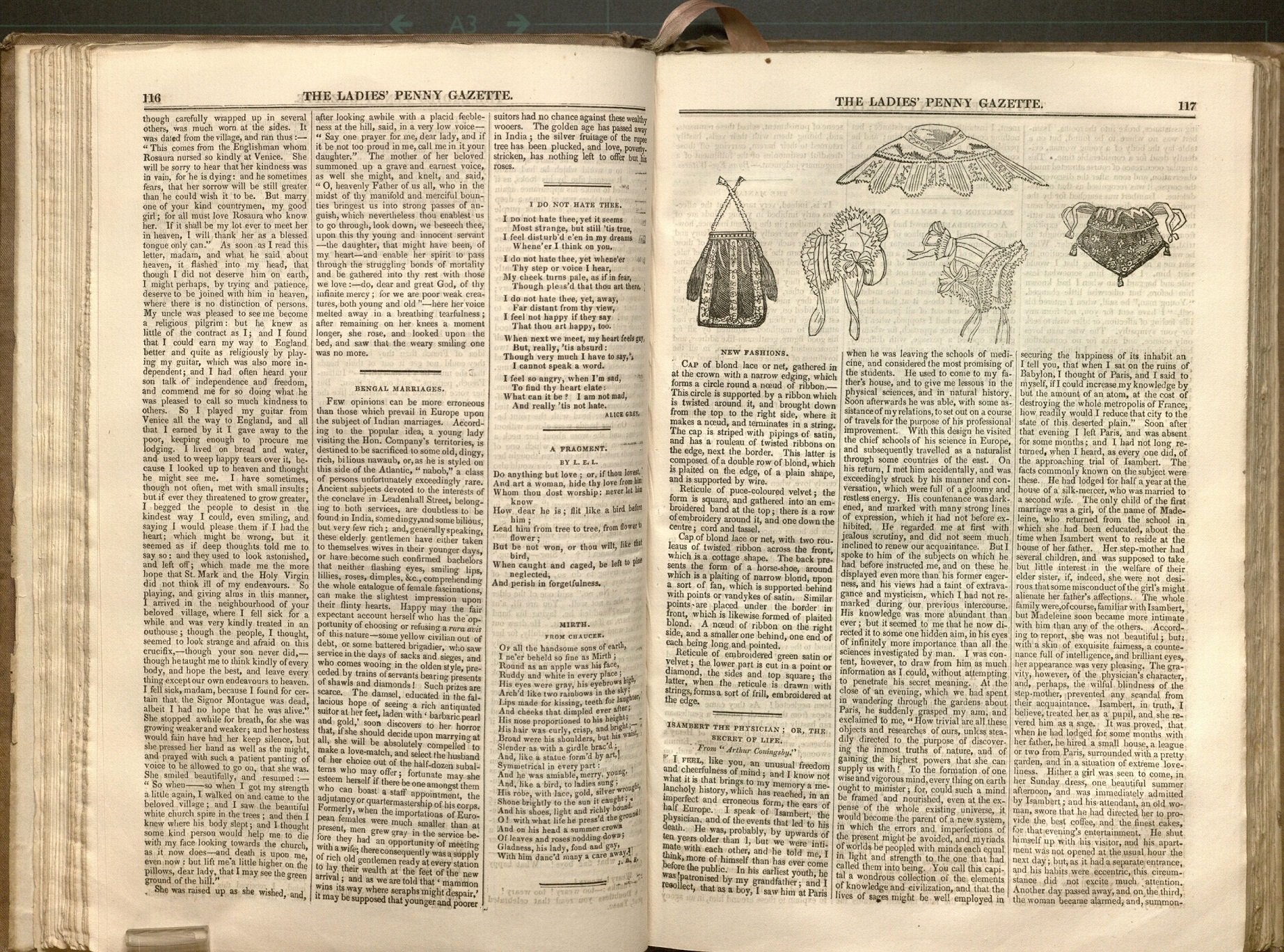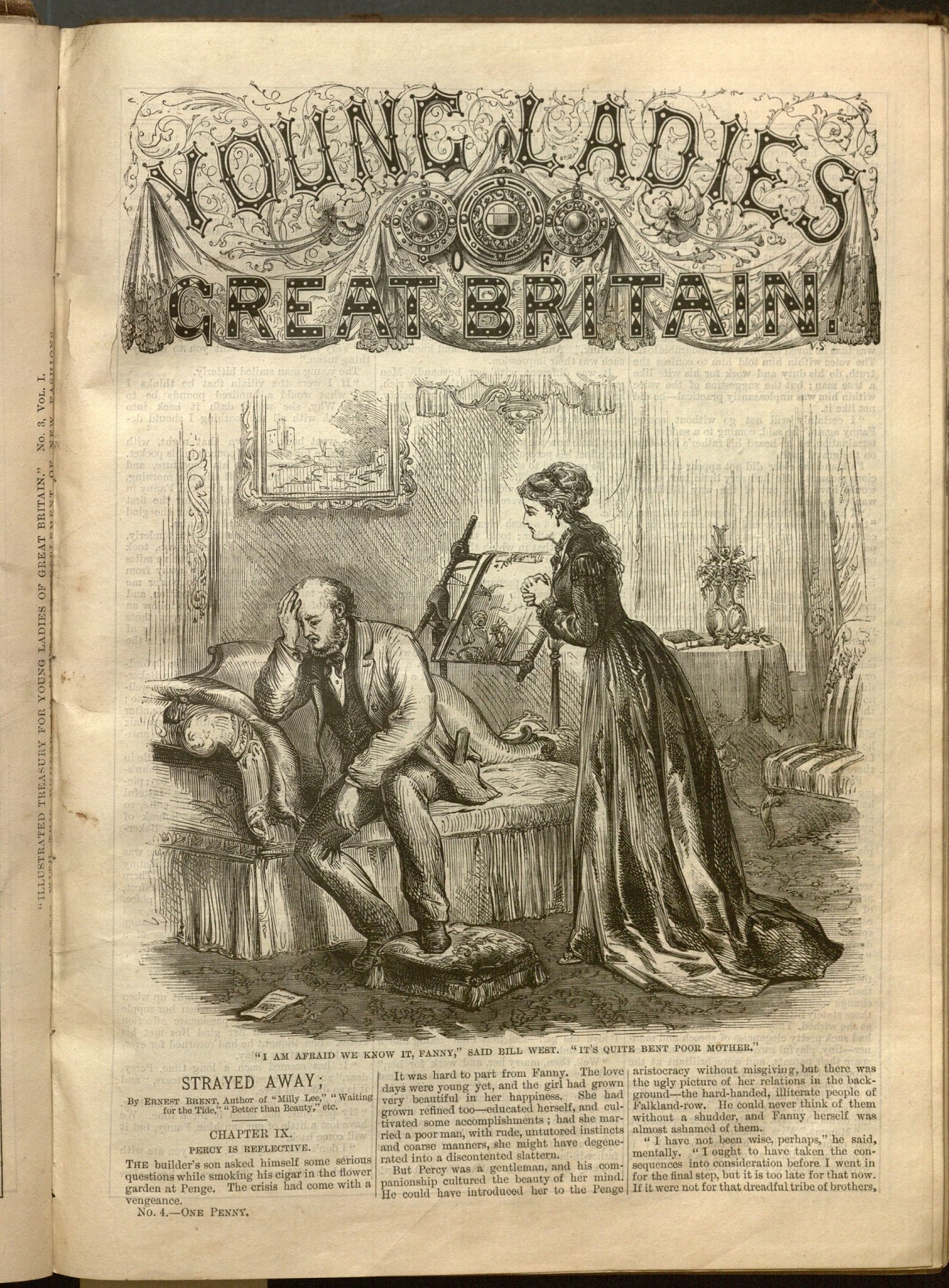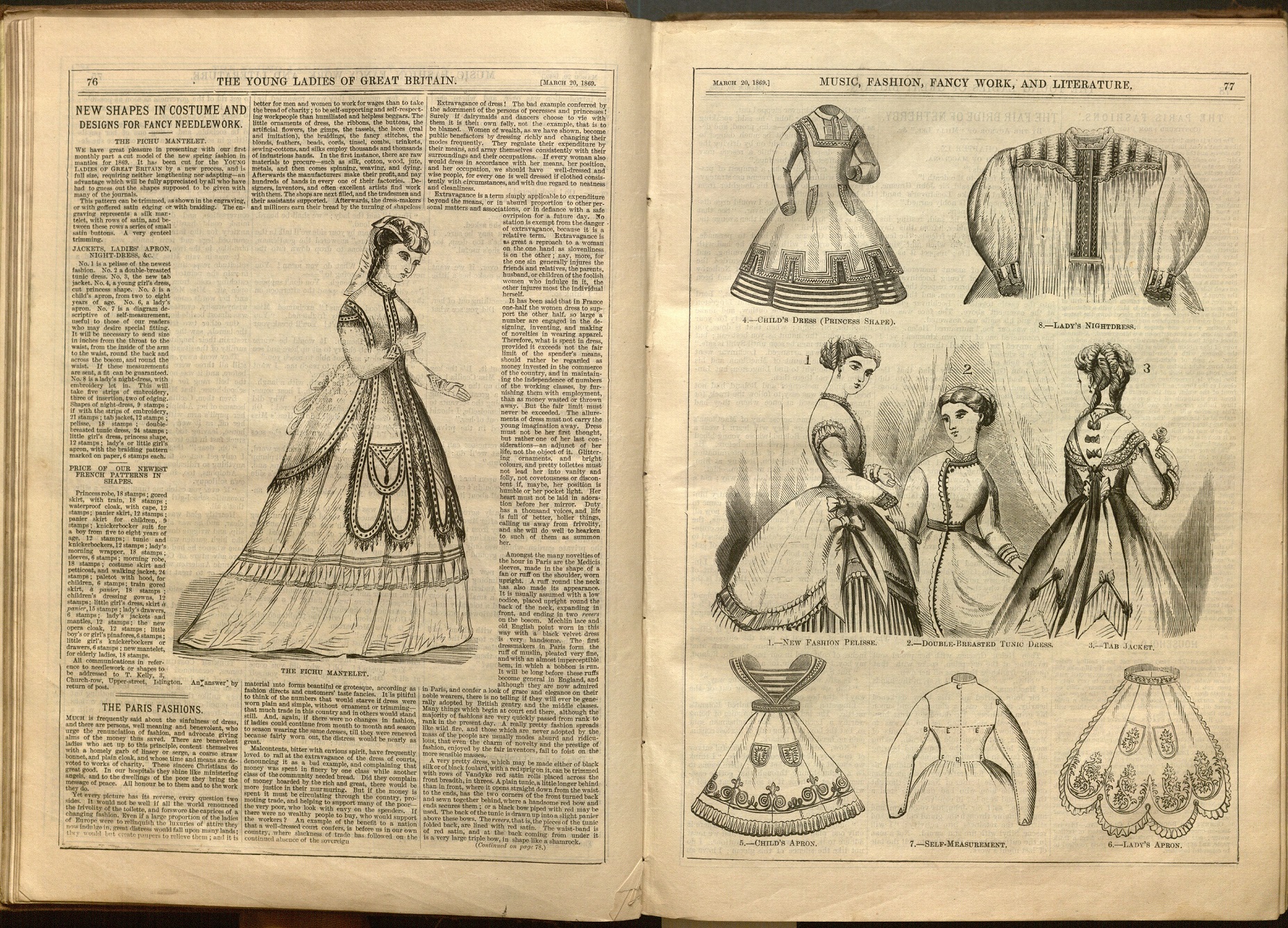Charlotte Brontë : Jane Eyre Revealing the Reality in Her Fiction
April 25th, 2016Charlotte Brontë was born on April 21, 1816 in Thornton, England to the Reverend Patrick Brontë and Maria Branwell Brontë. Charlotte’s life was marked by tragedy, losing her mother when she was five, the aunt that raised her, and all five of her siblings. Yet despite these sorrows, she was able to use the experiences from her life to become one of the greatest writers of the Victorian era. Her passionate, honest, and rebellious stories continue to inspire authors and readers alike.
![Front cover of the Thompson Brother’s Fireside Library edition of Jane Eyre: an Autobiography with an illustration of Charlotte Brontë, [Nov. 1891?].](https://blogs.lib.ku.edu/spencer/wp-content/uploads/2016/04/OHegarty_C2307.jpg)
Front cover of the Thompson Brother’s Fireside Library edition of Jane Eyre: an Autobiography
with an illustration of Charlotte Brontë, [Nov. 1891?]. Special Collections, Spencer Research Library.
Call Number: O’Hegarty C2307. Click image to enlarge.
Jane Eyre, her most popular work, has bewitched audiences for more than 150 years with its poignant tale of an orphan girl who became a governess and dared to overcome societal constraints by finding true love and gaining financial independence. Although the story in itself is exciting, one of the main reasons for Jane Eyre’s continued popularity is the perfect blend of romance with realism. By pulling from her own life, Charlotte Brontë infuses her novel with verisimilitude. When Jane grieves over the death of Helen Burns, rages against the stifling life of a governess, and despairs over the impossibility of her love, Charlotte is letting us into her personal thoughts, emotions, and experiences. The images I have selected from one of our editions of Jane Eyre highlight these fictionalized autobiographical moments.
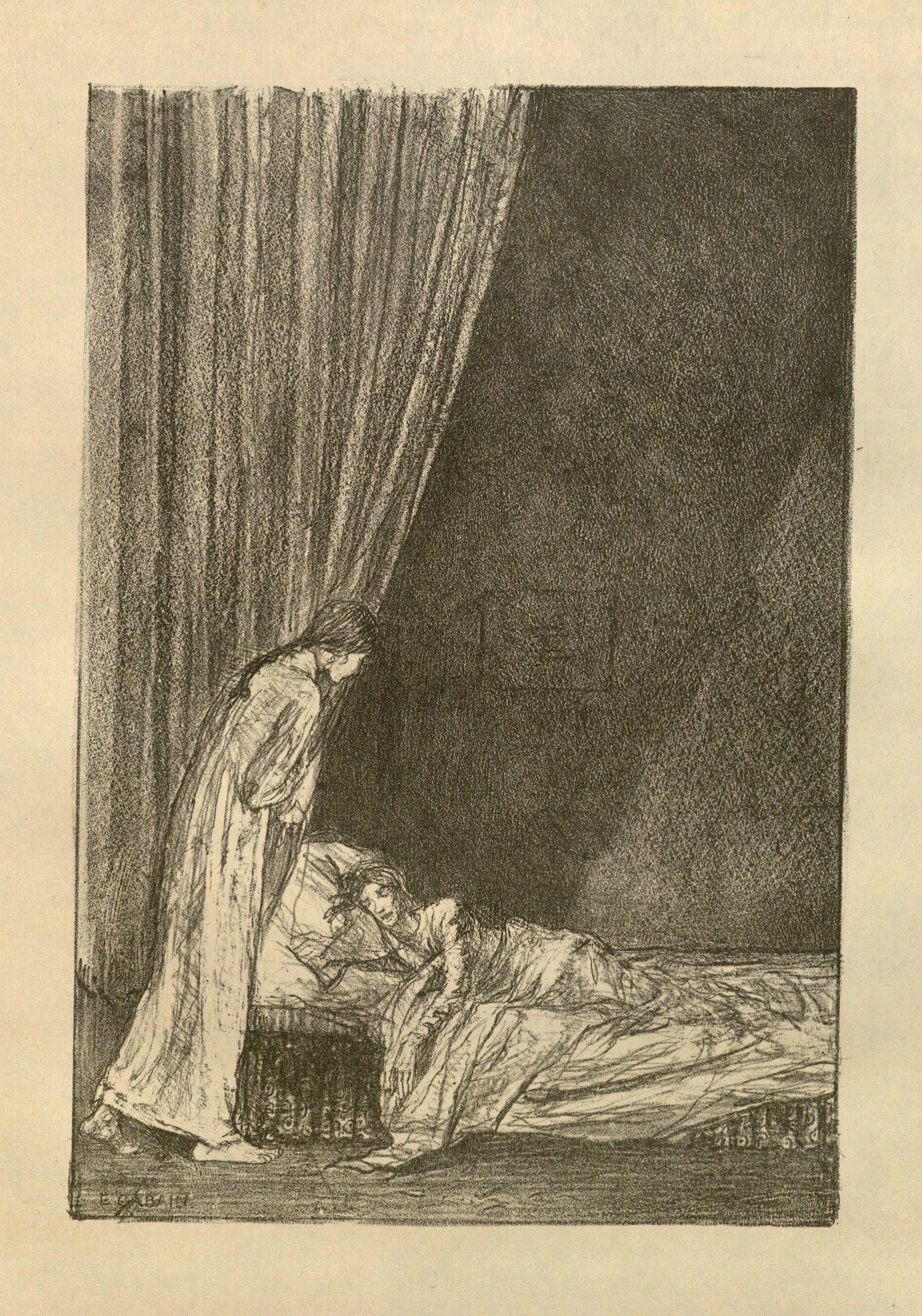
Lithograph by Ethel Gabain from Imprimerie Nationale’s 1923 edition of Jane Eyre.
This illustration depicts Jane Eyre at the puritanical Lowood School visiting her dying friend, Helen Burns.
As a child Charlotte lost two sisters, Maria and Elizabeth, to pulmonary tuberculosis due to the terrible conditions
at the Clergy Daughters’ School at Cowan Bridge. Lowood was modeled off of the Clergy Daughters’ School
and the character of Helen Burns was inspired by her oldest sister, Maria, who had been like a mother to Charlotte.
Special Collections, Spencer Research Library. Call Number: G64. Click image to enlarge.
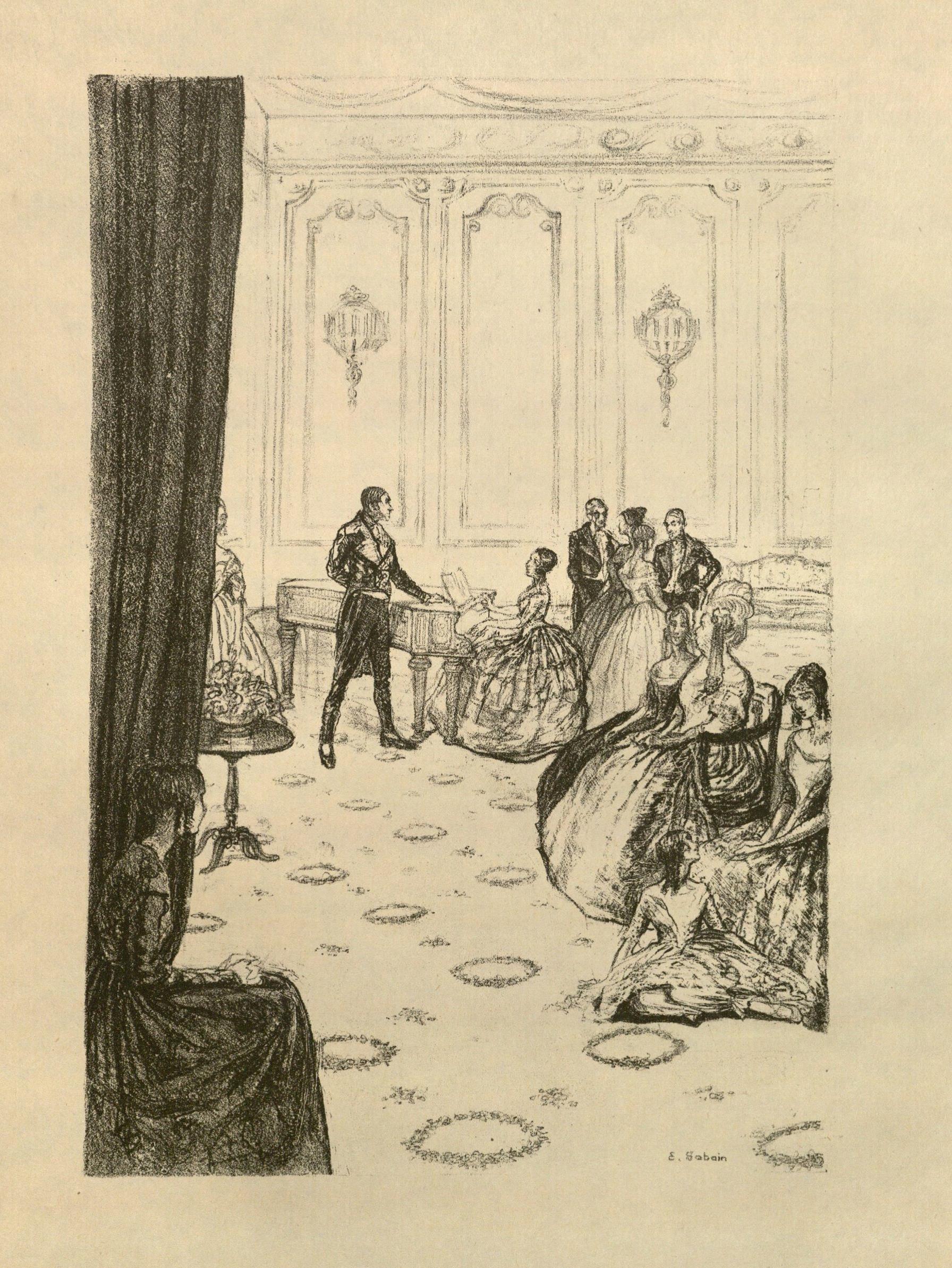
Lithograph by Ethel Gabain from Imprimerie Nationale’s 1923 edition of Jane Eyre.
This illustration depicts Jane, as a governess, sitting ignored by her employer, Mr. Rochester,
and his upper class visitors. Charlotte Brontë served as a governess for a school and for private families
and found it degrading, as she explains in this quote from her letters cited in the Oxford Dictionary of National Biography,
“I see now more clearly than I have ever done before that a private governess has no existence,
is not considered as a living and rational being except as connected with the wearisome duties she has to fulfill.”
Special Collections, Spencer Research Library. Call Number: G64. Click image to enlarge.
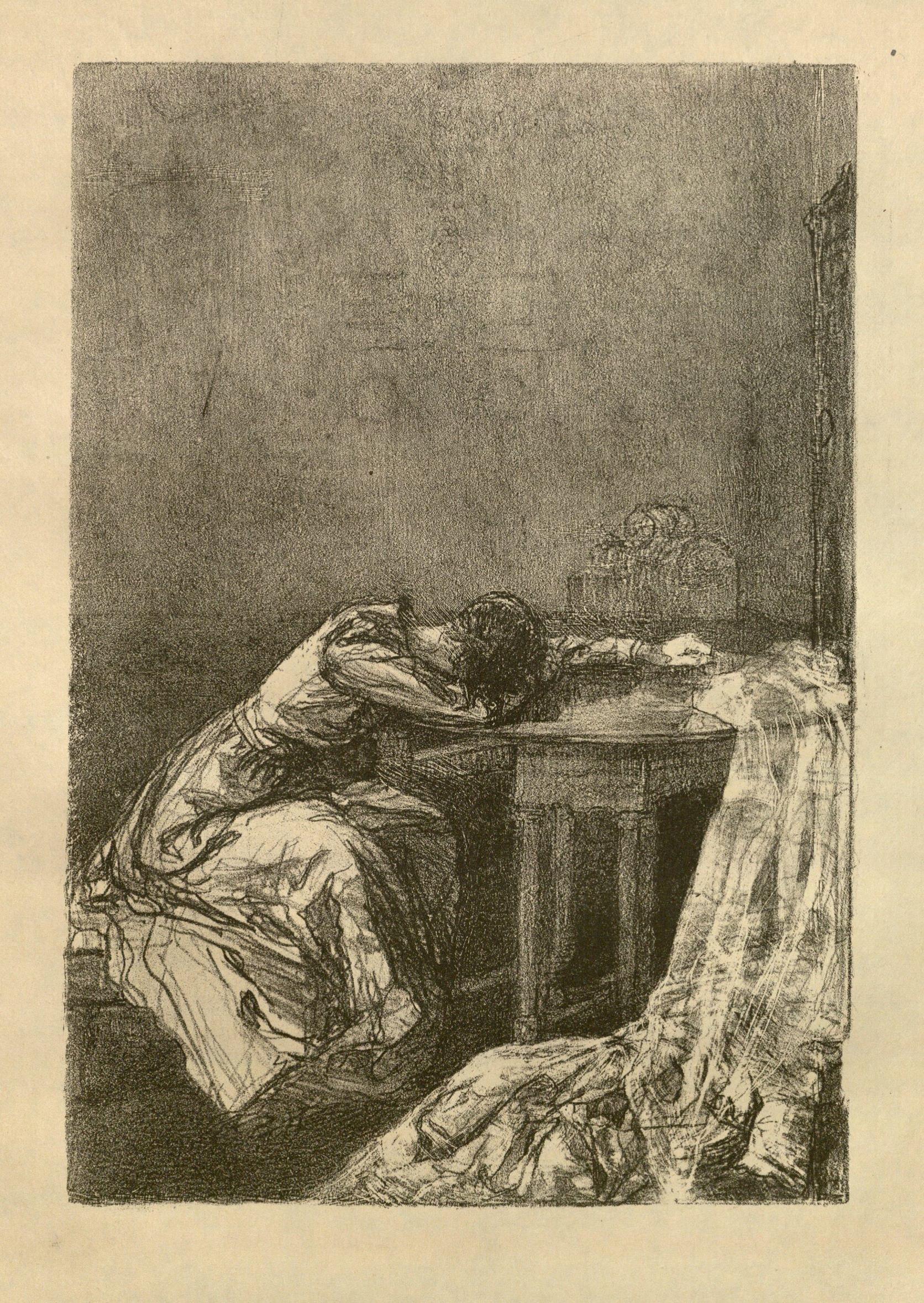
Lithograph by Ethel Gabain from Imprimerie Nationale’s 1923 edition of Jane Eyre.
This illustration depicts Jane weeping over her wedding dress after discovering that her groom, Mr. Rochester,
was already married. While teaching in Brussels, Charlotte fell in love with her French tutor, Constantin Heger,
a married man, but her love was not returned. She sent many letters to him with no response,
sending her into depression that would often manifest itself in headaches.
Special Collections, Spencer Research Library. Call Number: G64. Click image to enlarge.
If you’re interested in learning more about Charlotte Brontë or her other works, come visit us at Spencer Research library and check out these resources:
- Brontë, Charlotte. Napoleon and the Spectre: a Ghost Story. London: C. Shorter, 1919. Call Number: D916
- Brontë, Charlotte. The Professor: to Which are Added the Poems of Currer, Ellis, and Acton Bell, Now First Collected. London : Smith, Elder and Co., 1860. Call Number: Yeats Y290. [William Butler Yeats personal copy].
- Brontë, Charlotte. Shirley: a Tale. London : Smith, Elder and Co., 65, Cornhill, 1849. Call Number: C217. [First Edition].
- Brontë, Anne, Brontë, Charlotte, and Brontë, Emily. Poems. London: Smith, Elder and Co., 1846 [i.e. 1848]. Call Number: B2118. [Fist Edition, Second Issue].
- Gaskell, Elizabeth Cleghorn. The Life of Charlotte Brontë. London: Smith, Elder, 1857. Call Number: C4771.
Mindy Babarskis
Library Assistant
Public Services

